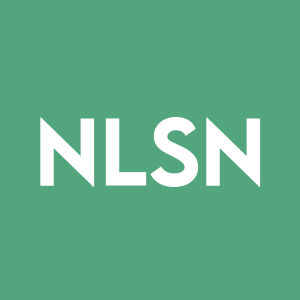Toward The Future Of Digital Audience Measurement
Nielsen Holdings plc has announced the need for significant changes in digital audience measurement as third-party cookies phase out due to privacy concerns. Marketers must adapt to new technologies for accurate measurement, focusing on people-centric and persistent identifiers across devices. This shift requires agreements between measurement companies and publishers, as well as models for an anonymous web. The evolution of measurement will likely lead to notable trend breaks, necessitating brands to prioritize actual consumer insights.
- Nielsen emphasizes the transition to consumer-first digital marketing practices.
- The necessity for new measurement methods presents opportunities for innovation in the industry.
- The shift away from cookies complicates the ability to accurately measure audience exposure and demographics.
- Potential for significant trend breaks may disrupt existing measurement strategies.
Insights
Analyzing...
TAMPA, Fla., May 6, 2021 /PRNewswire/ -- As marketers continue leaning into new tools and technologies to prepare for a world without third-party cookies, much of the conversation about adaptation has focused on planning and targeting. These are obviously critical aspects of any marketing strategy, but it's important to not exclude the need for accurate measurement as changes in the digital media environment accelerate.
Importantly, the changes the industry has been making in response to increasing privacy requirements have implications for all aspects of digital marketing, and the new world of digital audience measurement looks just as different without cookies or MAIDs (mobile ad IDs) as planning and targeting does.
The other thing worth pointing out is that a transition to consumer-first digital marketing practices means that the data and insights marketers will have to work with will look different from what they are accustomed to. Said differently, we're not simply replacing old processes with new ones that fit neatly into the same mould.
As we know, the increasing limitations on third-party access to cookies, MAIDs and other identifiers complicate the ability for marketers to know exactly who sees their campaigns. That's because as companies chart their individual paths to limit access to information related to their users, the deterministic approaches to link demographics to exposures that the industry previously used are no longer viable.
Instead of recognizing people and what devices they're using, measurement services now need to establish new ways to identify devices and the people who use them, in a manner consistent with applicable privacy requirements. To be effective, these identifiers need to be:
- People centric
- Persistent (stable over time)
- Prolific (used consistently across the web)
- Transferable (across different devices / access points to enable cross -platform)
In all likelihood, such identifiers won't be available to measure all digital impressions. To cover the gap, digital measurement will need to be augmented with an identity-less solution. To ensure maximum effectiveness, that solution should be probabilistic in design, relying heavily on machine learning, and contextual in nature, using clues and signals from how and where impressions are served in order to pinpoint user demographics.
It's a unique time for digital marketing, and there are really three key areas that tech companies will need to solve for as they make their way toward holistic measurement in this new reality. First, agreements between measurement companies and publishers will be critical in order to measure their audiences. To determine all other open-web audiences, companies will need to develop alternate identity solutions that leverage responsibly licensed third-party user registration data. Lastly, companies will need models for the anonymous web where individual and device identifiers are not present.
In this digital age, it's easy to lean into big data, machine learning and artificial intelligence for tomorrow's solutions. Importantly, brands and marketers cannot lose sight of the importance of actual people in modern marketing. People-based truth sets (panels) are more important than ever, as direct observation is critical to correct for bias and error.
As the evolution of measurement progresses, it's important to recognize—and plan for—significant trend breaks. The environmental changes driving this evolution will fundamentally alter how we measure audiences. Given the change in the basis for measurement, notable trend breaks are to be expected.
ABOUT NIELSEN
Nielsen Holdings plc (NYSE: NLSN) is a leading global data and analytics company that provides a holistic and objective understanding of the media industry. With offerings spanning audience measurement, audience outcomes and content, Nielsen offers its clients and partners simple solutions to complex questions and optimizes the value of their investments and growth strategies. It is the only company that can offer de-duplicated cross-media audience measurement. Audience is EverythingTM to Nielsen and its clients, and Nielsen is committed to ensuring that every voice counts.
An S&P 500 company, Nielsen offers measurement and analytics service in nearly 60 countries. Learn more at www.nielsen.com or www.nielsen.com/investors and connect with us on Twitter, LinkedIn, Facebook and Instagram.
![]() View original content:http://www.prnewswire.com/news-releases/toward-the-future-of-digital-audience-measurement-301286050.html
View original content:http://www.prnewswire.com/news-releases/toward-the-future-of-digital-audience-measurement-301286050.html
SOURCE Nielsen Holdings plc






